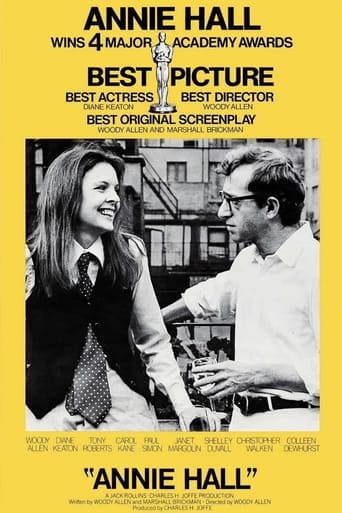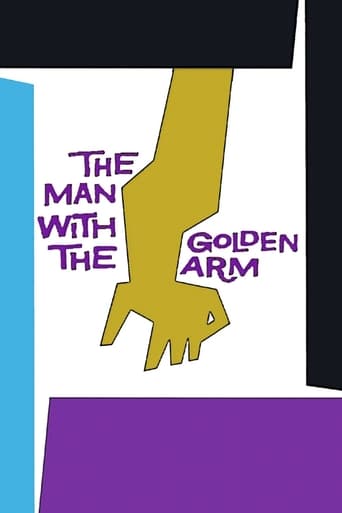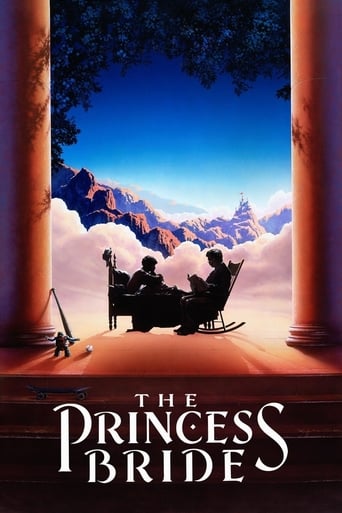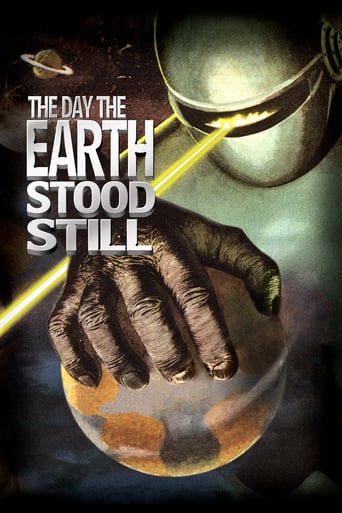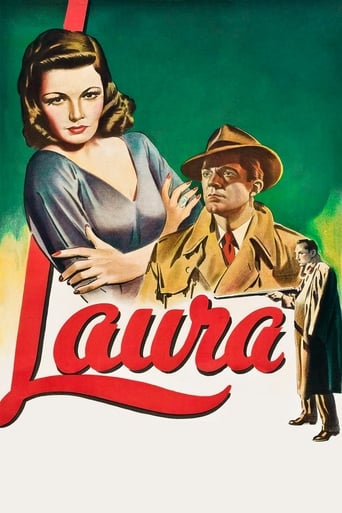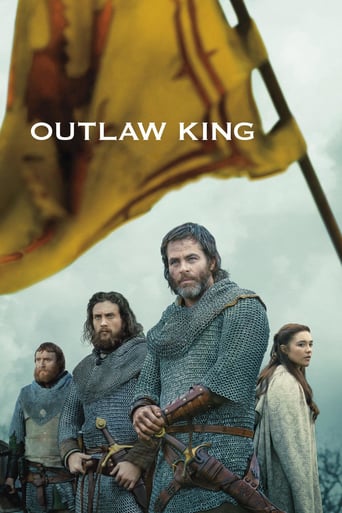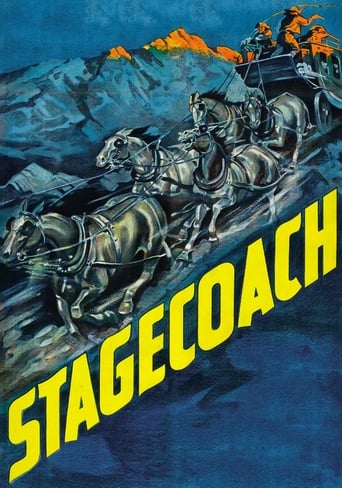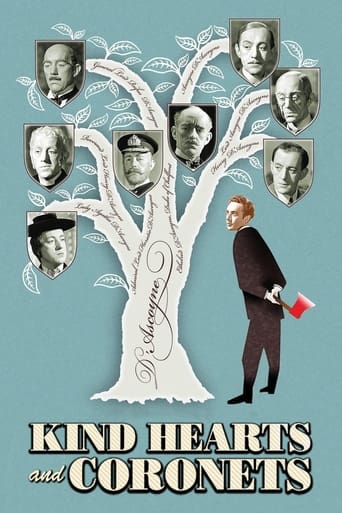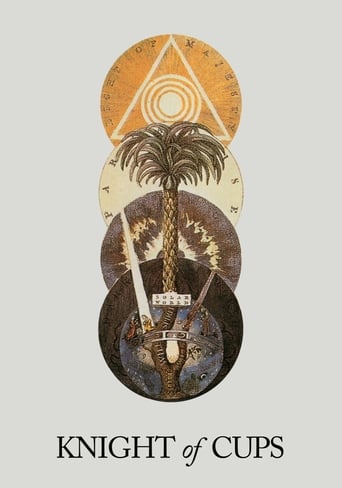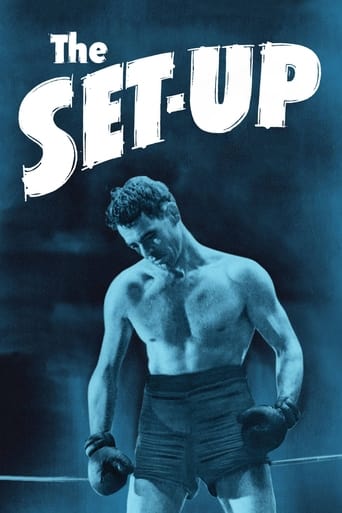


The Set-Up
Expecting the usual loss, a boxing manager takes bribes from a betting gangster without telling his fighter.
-
- Cast:
- Robert Ryan , Audrey Totter , George Tobias , Alan Baxter , Wallace Ford , Percy Helton , Hal Baylor


Similar titles
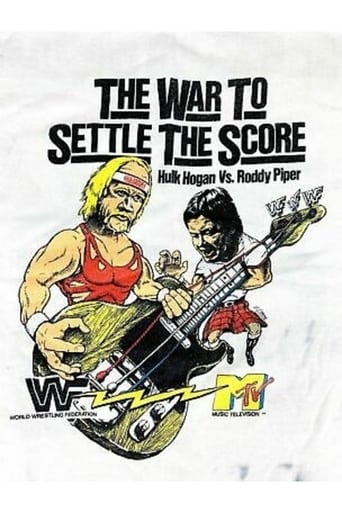
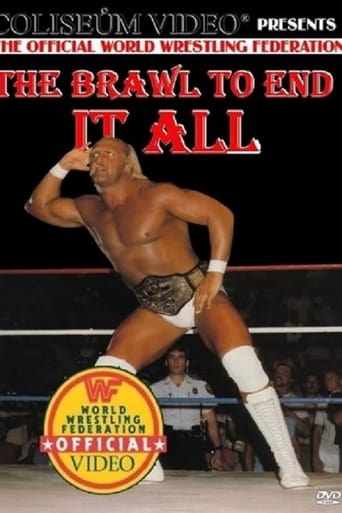


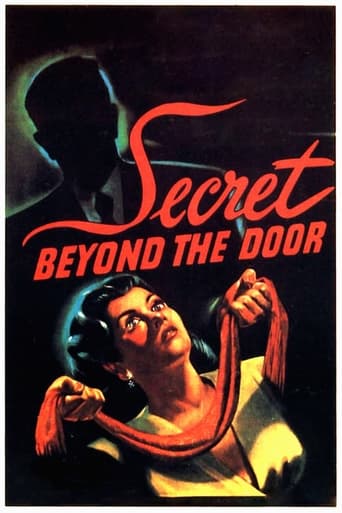
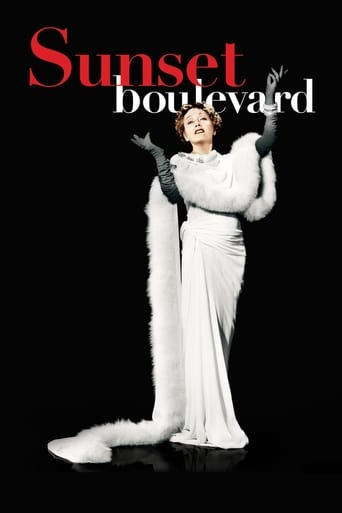
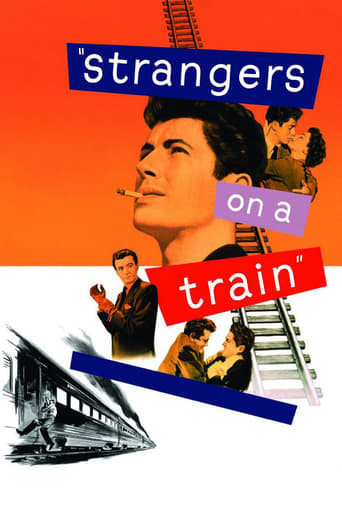
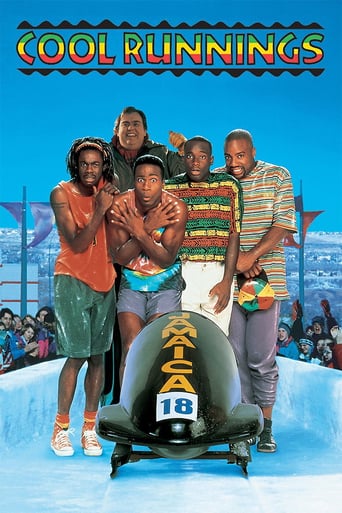
Reviews
A different way of telling a story
I like movies that are aware of what they are selling... without [any] greater aspirations than to make people laugh and that's it.
Simple and well acted, it has tension enough to knot the stomach.
There are moments that feel comical, some horrific, and some downright inspiring but the tonal shifts hardly matter as the end results come to a film that's perfect for this time.
Like Marlon Brando in "On the Waterfront", a boxer is being paid to lose. Here though its not the character who should have been a contender, it's the movie which should have been and isn't. There's no question, it's a gritty and promising noir: the locale, action and spot-on realistic looking and sounding low rent end of professional boxing. With star, Robert Ryan, and these ingredients it instead rather disappoints and unsurprisingly failed to get awards.As others have mentioned, the scenes containing the peripheral characters are very well drawn. The problem is the rather slack telling of the main story about Stoker (the boxer) and his girlfriend. There are repeated sequences of her looking over a roadbridge at passing buses while she thinks about - what? And of Robert Ryan in the ring (during the fight) repeatedly glancing at the empty seat she should have occupied. The central fight is very long but. again the ebb and flow of the fight doesn't engage the viewer. In real life, some of the most enjoyed bouts are ones where the fighter who has been knocked down several times goes on to win the fight.Robert Ryan, in reality a former Marine and boxing instructor, is too commanding and too fit looking to appear like a washed up boxer in his last chance fight. The plot has him thought of as a no-hope loser. I've watched boxing (on TV) for many decades but was disappointed by the boxing sequences here. Real boxing happens fast - sometimes only understandable in slow motion. Boxers take advantage of moments of vulnerability. If a boxer is fast he can get two or more punches - with alternate hands - in very rapid succession before the opponent can take defensive action. Here almost every sin of movie fights was committed. Boxers pausing to admire the effect of a blow before delivering a follow up. Boxers rocking backwards and forwards after being hit. In reality boxers as a matter of pride and self-interest do their best to cover up being hurt. I assume it was Director Robert Wise who imposed this stagey staged fight. Perhaps a genuine professional boxer could have more convincingly faked a fight. Not something I guess a boxing instructor in the Marines would ever do - and it shows.
I was completely stunned by this movie (which I had never even heard of before last night)--it should be near the top of everyone's list of the best movies of all times.I am tagging my review as a spoiler not for a plot element, but because I want to mention that it unfolds in real time: the 71 minutes of the movie corresponds exactly to 71 continuous minutes of action in the story, and this gives the movie much of its amazing intensity. I did not realize this until the end--that's why drawing attention to it is somewhat a spoiler.Robert Ryan is marvelous as Stoker, a boxer nearing the end of his career; Ryan boxed at Dartmouth and in the Marines and he is wonderful in the part. When he smiles his face lights up the screen. The actors in the smaller parts are outstanding and fun to watch--Stoker's tiny cut man with a marvelously expressive face, his opponent Tiger Nelson, the characters in the audience, and the boxers in the dressing room--every little portrait is a gem. The fight choreography is remarkable and so convincing, and the night photography of "Paradise City" is suitably lively and tawdry, but also beautiful in the way that only black and white cinematography can be, especially in the scene on the viaduct. (Little bit of trivia: The dance hall is named "The Coral Sea" which to the 1949 viewer called up a decisive battle between Japan and the US--the world's first air/sea encounter--a note of grim irony.) This movie made me wish that most movies were kept to 70 minutes--this intense pace makes contemporary movies seem boring, tedious and self-indulgent by comparison.
Robert Wise's taut, film noir boxing drama "The Set-Up" qualifies as one of those memorable B-movies that delivers sturdy performances from a first rate cast and conjures up lots of atmosphere. The action unfolds in an urban environment with a down-on-his-luck prizefighter, Stoker Thompson (Robert Ryan of "Golden Gloves"), desperate for one last taste of victory. The boxer's wife, Julie (Audrey Totter of "The Lady in the Lake") has gotten to where she cannot stand by and watch Stoker get slaughtered in the ring. The last time that Julie saw him take a beating, poor Stoker couldn't remember her name for a while. Meantime, our hero's shady fight manager, Tiny (George Tobias of "Sergeant York") has connived to throw Stoker's next fight because he doesn't think that his 35-year old pugilist can survive in the ring against a younger man. Clocking in at a meager 72 minutes, "The Set-Up—which draws its title from the take-a-dive-deal that Tiny negotiated with the opposing boxer's manager—is lean, mean, and entirely straightforward. Robert Ryan is terrific as the boxer who is determined to win his next fight. Audrey Totter is cast as his wife who wants him out of the game. George Tobias plays Tim, Ryan's slimy fight manager. Tobias is so sure that Stoker will fold that he doesn't even confide in him anything about his crooked deal. Percy Helton is Tobias' assistant Red, and he struggles without success to convince Tobias to let Ryan in on the secret. Incredibly, Stoker surprises everybody and defeats Tiger Nelson (Hal Baylor of "Sands of Iwo Jima") during a grueling match. The man who surprised the set-up is a slickly-attired gambler, Little Boy (Alan Baxter of "Santa Fe Trail"), who doesn't like it when people 'welsh' on him. The believable cast is populated with a number of familiar character actors, such as Wallace Ford, Darryl Hickman, and David Clarke. Milton R. Krasner's gritty black and white cinematography captures the grimy underbelly of American society. The ending delivers a knock-out punch. If you're looking for an excellent example of film noir, you need look no further.
This was Robert Ryan's favourite movie. It's not hard to see why. It is one of the most uncompromising movies about boxing ever made, and still retains its power. It covers similar territory to John Huston's later "Fat City", but unlike the Huston movie, it does offer a ray of hope for its protagonists at the end."The Set-Up" looks at fighters on the bottom rungs of the boxing ladder; men who know no other trade and fight on long past their prime. The movie is set largely behind the scenes in locker rooms and changing rooms as the fighters await their bouts.Ryan brought credibility to the role – he had been an unbeaten heavyweight champion in college. Even at forty, he was in great shape; tall and rangy, he looks an awkward opponent.Ryan's character, Stoker Thompson, is an over the hill fighter. On the night of his fight with a much younger boxer, his manager, Tiny (George Tobias), takes money from a criminal, Little Boy, for Stoker to take a dive. Tiny is so convinced that he won't last the distance that he doesn't even bother to tell Stoker of the arrangement.Stoker spends his time before the fight with his wife, Julie, played by Audrey Totter who fears for Stoker and their future together. However, Stoker is confident that he can make a good showing against his opponent, Tiger Nelson."The Set-Up" features sets that could be straight from the Film Noir manual; seedy hotels, dingy bars and newsstands line streets either lit by the glare of neon signs or swallowed by deep shadows. The changing room is a masterpiece of mood.As stoker gets ready, the other fighters around him represent the various stages in the career of a boxer.In the years since "The Set-Up" was made, we've seen a lot of boxing on television. The fight scenes in "The Set-Up lack" that ultimate realism. The protagonists rain bone-crunching blows on each other – any one of which probably would have ended a real bout. However the movie is a lot more realistic than many movies of the time; Hal Baylor (Fieberling), who plays Tiger Nelson, had also been a boxer, and the make-up is convincing, albeit in black and white.When it becomes obvious that Stoker is trying to win, Tiny tells Stoker about the deal he has made. Stoker is disdainful of the deal, refuses to go down, and wins. Tiny disappears, and Stoker waits in the changing room for the inevitable visit from Little-Boy.Little-Boy waits outside the stadium with a number of thugs, even though he has become aware that Stoker did not know of the deal before the fight. Stoker has his hand permanently damaged. He staggers from the alley where Julie finds him. Despite the injury, they both realise that Stoker's boxing days are finished and that it is no longer a barrier between them."The Set-Up" remains a minor masterpiece and, after 90 films, Robert Ryan, one of the icons of Film Noir, would still single this one out as his all-time favourite.

